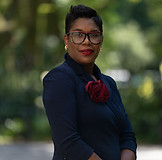top of page
The services and programs provided by the New York State 21st Community Learning Centers are a collaborative effort among five primary entities: The New York State Education Department, The New York City Technical Assistance Resource Center (part of the New York City Department of Education), The Rest of State Technical Assistance Resource Center (part of Binghamton University Community Schools), the State Evaluator (Measurement Incorporated) and 21st CCLC funded Grantees throughout the state.
Collaborating Entities
Round 8/8a NYS 21st CCLC Subgrantees
Meet the Teams
Click on any team member to learn more or click here to Contact Us.
Rest of NY State

Director
.jpg)
Program Specialist

Program Specialist

Program Specialist
nyc
ros
bottom of page





